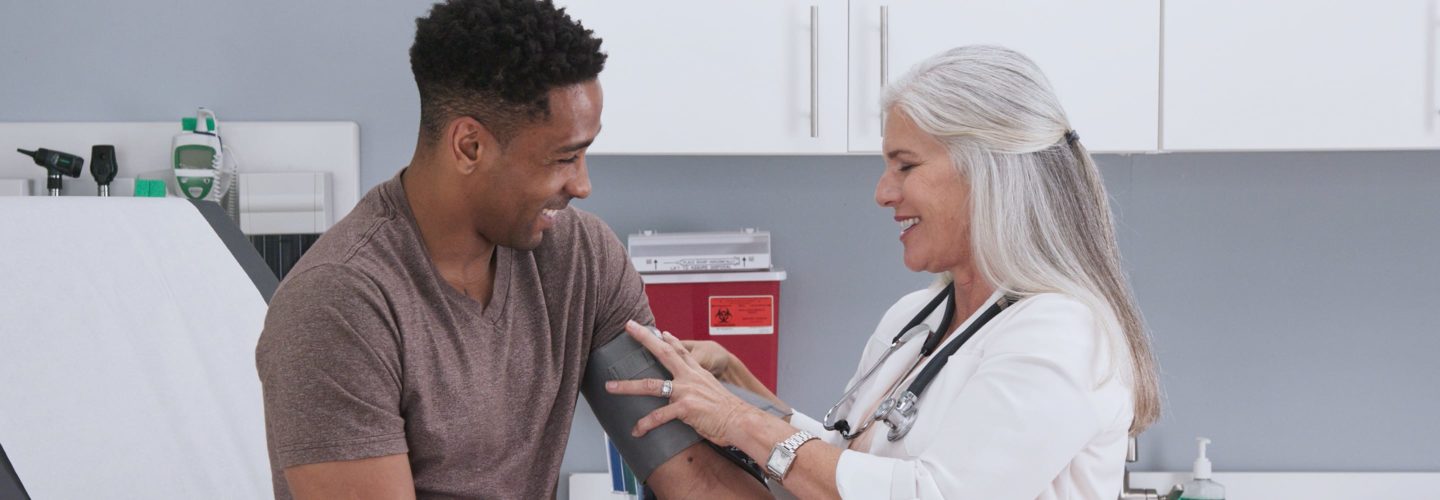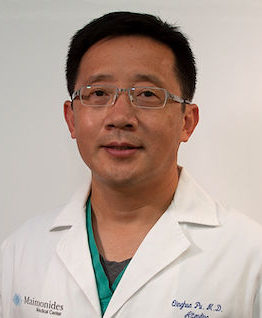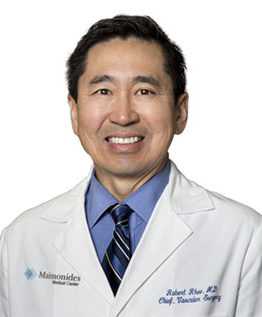Non-invasive options to expedite recovery
Many patients with aortic aneurysms do not experience symptoms, which is why some diagnoses can come as a surprise. We understand that an aortic aneurysm can cause extreme pain, and we’re here to help reduce this pain. As the aneurysm grows, it can cause several symptoms, including chest pain, abdominal pain, back pain, and pulsing sensation in the abdomen. Our aortic specialist can diagnose aneurysms, including a physical exam that can reveal decreased circulation to lower extremities, computed tomography (CT) scan, duplex vascular imaging, and echocardiogram.
An aortic aneurysm is an enlargement of the aorta that forms as a result of a breakdown in the strength of the aortic wall causing a ballooning of the aorta. While all the causes are not well understood, hypertension, high blood pressure, smoking, and family history play a role in aortic disease and may result in aneurysms, dissection, or rupture of the aorta.
Areas of the chest where thoracic aortic aneurysms occur:
- Abdominal Aortic Aneurysm – Involves an enlargement of the aorta, the main blood vessel that delivers blood to the body, at the level of the abdomen. It also involves the area below the kidneys (infrarenal) and can also involve the area above the kidneys (suprarenal)
- Aortic Arch Aneurysm – Involves the area of the curved portion of the aorta. This includes the connections to arteries that supply blood to the vessels of the brain and arms
- Ascending Aortic Aneurysm – Involves the area that extends above the aortic root and below the aortic arch
- Descending Thoracic Aorta – Involves the lower portion of the aortic arch and extends down to the abdomen. This includes the connections to arteries that supply blood to major organs in the area of the torso
- Thoracoabdominal Aortic Aneurysm – Involves the area that covers the entire thoracic portion of the aorta and extends down to the abdomen. This includes many of the arteries that branch off various parts of the aorta and can be more complicated than the other types of aneurysms
Genetic diseases, such as a Bicuspid Aortic Valve Disease, Marfan Syndrome, Ehlers-Danlos Syndrome, Loeys-Dietz, and Turners Syndrome may lead to progressive dilatation of the aorta due to abnormalities in the building blocks of the aortic wall. Many genes have been identified that are associated with aortic disease. Evaluation of immediate family members is important.

Treating aortic aneurysms with non-invasive options
Medical Management
Often, medication is used to lower your blood pressure and cholesterol level. It is important to notify your doctor immediately if you experience chest, back, or abdominal pain and report to the nearest emergency room because this can be a sign of an aortic rupture.
Your aortic disease may require surgery. For aneurysms, treatment (surgical or endovascular) is recommended after the diameter is 5 cm (2 inches) in many cases, and 5.5 cm (2.2 inches) in the majority of cases to avoid future rupture or dissection. Your surgeon will determine the best option for your thoracic aortic aneurysm repair based on your medical history, signs, and symptoms, as well as the size and location of the aortic disease.
Watchful Waiting
The normal size of the average aorta is about 2-3 cm (approximately 1 inch). The decision to operate is based on the cause of the aneurysm, the patient’s family history, medical conditions, and age. Most aortic aneurysms may not require surgical intervention. However, watchful waiting and monitoring with CT or MRI scan every 6-12 months are vital to your health.
Surgical Management
Any symptomatic aortic disease may require surgery. Aortic aneurysm treatment (surgical or endovascular) is recommended after the diameter is 5 cm (2 inches) in many cases, and 5.5 cm (2.2 inches) in the majority of cases to avoid future rupture or dissection. The normal size of the average aorta is about 2-3 cm (approximately 1 inch). The decision to operate is based on the cause of the aneurysm, the patient’s family history, medical conditions, and age.
Aorta surgery may involve the aortic valve, coronary arteries, the aorta, and any of its branches in the chest or abdomen. Endovascular stent grafts are a minimally invasive treatment used to repair the aorta whenever possible. Aortic valve replacement and mitral valve surgery might be required. Many times, a combination of procedures is necessary to achieve the best long-term survival in patients with this lethal disease.
Endovascular Aneurysm Repair
Endovascular Aneurysm Repair can be done by utilizing stents as a minimally invasive approach. Specialized devices with branches and fenestrations are also available to treat complex thoracic abdominal aneurysms. We are the only center in Brooklyn that has this program.
The catheter guides an expandable stent graft through the blood vessels to the location of the aneurysm, thereby eliminating the need to perform open heart surgery directly on the aorta. The stent graft acts like a barrier between the blood and the diseased portion of the aorta preventing further growth or leakage.
We’re here for your heart
At the Aortic Center, our expert heart specialists will guide you through your treatment options and stand ready to provide our cutting-edge expertise in urgent emergency situations. We help develop a treatment plan you’re comfortable with and are dedicated to helping relieve your pain through minimally invasive options that help reduce pain and expedite recovery.
Call (718) 283-7000 to make an appointment with an aortic specialist



